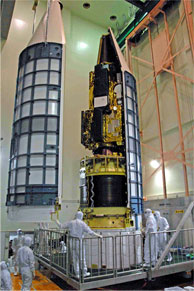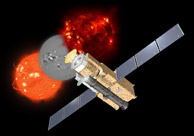It is a mystery to me that people tend to believe only in what they see, as if things that are invisible to our eyes do not exist at all. In fact, the universe is full of things we cannot see directly.
My initial interest in school was radio astronomy; I wanted to observe cosmic magnetic fields with a radio telescope. Wherever there are magnetic fields, there are high-energy particles spinning and emitting radio waves. By watching the radio waves, you can learn about cosmic magnetic fields, and so I chose to focus on the Sun's corona.
Solar flares and coronal mass ejections occur because of magnetic fields. These kinds of heating and eruptive phenomena are not unusual in space. Phenomena that look like super-hot coronae have been discovered around nearby neutron stars (the remnants of supernova explosions), and even around galaxies. If we can figure out the dynamics of explosions in the solar corona, it will be very helpful in understanding the mechanisms of eruptive phenomena in the universe as well as in space. In fact, Yohkoh's Observation data has made a great impact on astronomers who study explosive phenomena in the universe, and on geophysicists working on the terrestrial magnetosphere and its surroundings.
I am hoping that Hinode's Observations will help us understand the dynamics of magnetic reconnection. Data from Yohkoh has confirmed that magnetic reconnection is what generates solar flares. Yohkoh captured images, for example, of the collision between large magnetic field structures and magnetic fields that migrated to sunspots, which caused magnetic field lines to connect with one another, resulting in solar-flare explosions. To analyze this phenomenon, we need quantifiable physical measurements. So I'm very keen to thoroughly investigate magnetic reconnection with the Hinode telescopes.
I wasn't particularly interested in the Sun at first; I got involved in solar Observation because I really wanted to see cosmic phenomena that hadn't yet been discovered. Today I still consider it my goal to find invisible events in space. I'm thrilled to imagine what Hinode is going to show us. It will lead to new scientific breakthroughs and will help solve some of the mysteries of the universe.
Takeo Kosugi, Ph.D.
Professor at the Department of Basic Space Science, and Research Director at ISAS/JAXA, specializing in solar flare physics (radio/X-ray astronomy)
In 1976, Prof. Kosugi left the Department of Astronomy, Graduate School of Science, the University of Tokyo, for the Nobeyama Solar Radio Observation, where he was a research assistant at the Tokyo Astronomical Observation Later, he became an Associate Professor at the Institute of Astronomy, Faculty of Science, University of Tokyo, and a Professor at the Department of Radio Astronomy of the National Astronomical Observation of Japan. Since 1998, he has been a professor at ISAS and has been serving as project manager of the SOLAR-B (Hinode) satellite.

Hinode just before launch. The nose faring was attached to the M-V rocket at the Uchinoura Space Center.

Hinode carrying out its Observations (artist's rendering)